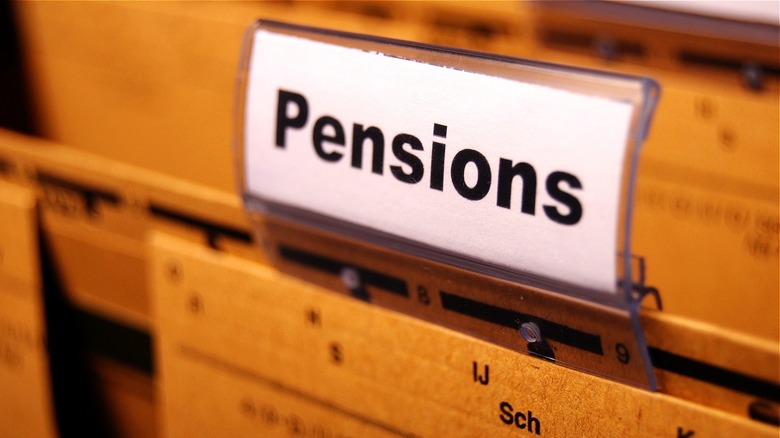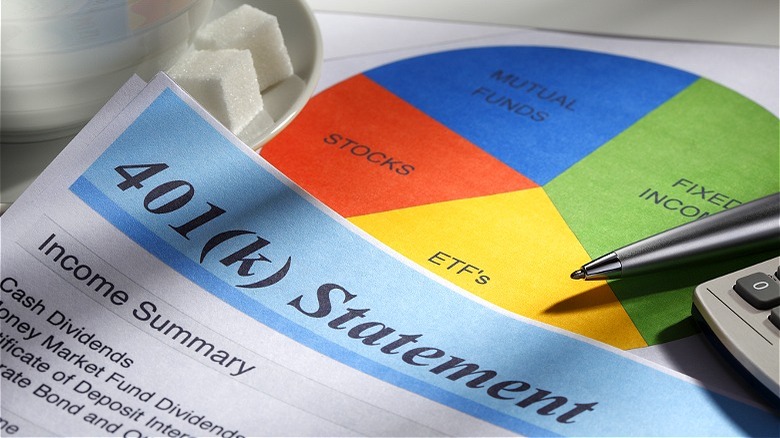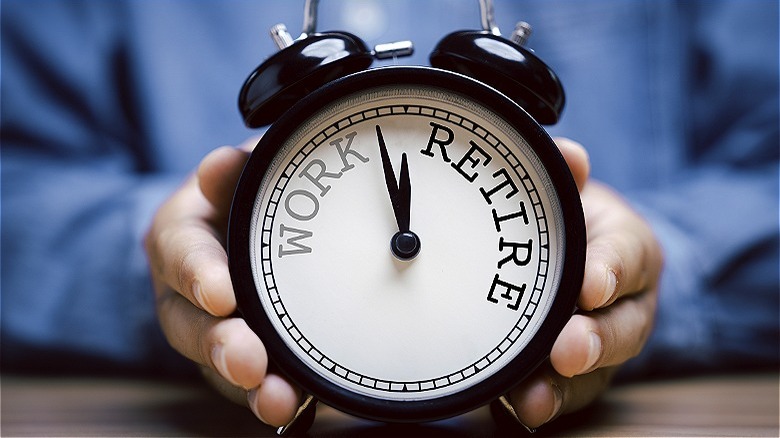What Really Happened To Pensions?
When the subject of retirement comes up, it seems like the only savings options out there today are IRAs or 401(k)s. This might leave you wondering about a former staple of the American workforce: pensions. You've more than likely heard of them, and maybe you've even had a grandparent mention their own pension plan. So what exactly happened to them? You might be surprised to learn that the tax code is responsible.
In 1978, Congress passed a new tax code — the Revenue Act of 1978 — that included a provision known as Section 401(k). This new provision gave employees a tax-advantaged option to defer their compensation as long as they participated in an employee-directed retirement account rather than an employer-directed account. Since 401(k)s allowed for more employee direction (due to being both voluntary and self-directed), the thought was that employees had greater control over their 401(k) investments than they did with an employer-directed pension. Plus, the fact that 401(k)s help defer taxes, it allows employees to enjoy lower taxable income every year that they contribute.
However, perhaps the most important element of the 401(k) plan is that it allows employers to pass off the burden of retirement savings on to employees rather than it being a company obligation. This ultimately helped fuel the meteoric popularity and sudden rise of 401(k) plans. According to 2008 data from the Bureau of Labor Statistics, participation in pensions fell from 38% in the 1980s to 20% in 2008. At the same time, employees covered by defined-contribution plans, like a 401(k), jumped from 8% to 31%.
How pensions are different from 401(k)s
If you're wondering how pensions and 401(k)s are different, a lot of it comes down to the employer saving money. 401(k) programs are considered defined contribution plans. This means participating employees contribute a set amount or percentage of their paychecks to a specific account intended to fund their retirement. Contributions aren't taxed as the money is earned (like regular income), so it's considered tax-deferred until the employee chooses to withdraw the funds. Employers can also offer a matching program, where they'll match a certain amount of an employee's contributions within a 401(k) account, but there's no guarantee or obligation for an employer to do so.
On the other hand, pensions, as defined benefits plans, place the burden of regular contributions entirely on the employer. With a pension, employers set aside a pool of funds that's made eligible for their employees after they retire. These benefit plans guarantee either a lump sum at retirement or set monthly payments for life, regardless of how well the investment pool is performing. This kind of plan places a higher burden and liability on employers, which is largely why they've become rare in the workforce. As Monique Morrissey, an economist at the Economic Policy Institute, described to CNBC, "... So we went from a system where the employer in the private sector paid for the entire pension and took on all the risk to a system where the worker in the private sector took on most of the cost and all of the risk."
Your retirement savings options today
As mentioned, with pensions mostly gone, the two main retirement options today are 401(k)s and individual retirement accounts. Anqi Chen, assistant director of savings research at the Center for Retirement Research at Boston College, described to CNBC exactly how 401(k) plans fit into our current system, "It's part of what we call [...] the three-legged stool of the U.S. retirement system, the other two parts being Social Security and private savings." According to the Investment Company Institute, in the United States, there are some 710,000 401(k) plans used by more than 70 million active participants, plus millions of former employees and retirees. The total amount these 401k(s) hold? An estimated $6.9 trillion as of September 2023.
Depending on employer-matching and planned retirement amounts, many people today also choose to contribute to private retirement savings accounts like an IRA or Roth IRA. While there are several things to consider when deciding which one might be right for you, the big picture of private savings accounts is that they allow you to save money for retirement outside of a 401(k) plan. This can apply to people who don't have a 401(k) option through their employers, people who are self-employed, or people who simply want to save more than their current 401(k) plan allows for. IRAs offer their own tax benefits depending on if contributors choose to roll pre-taxed or taxed income into their accounts. Depending on a contributor's preference, this choice can allow their money to grow either on a tax-free or tax-deferred basis.


